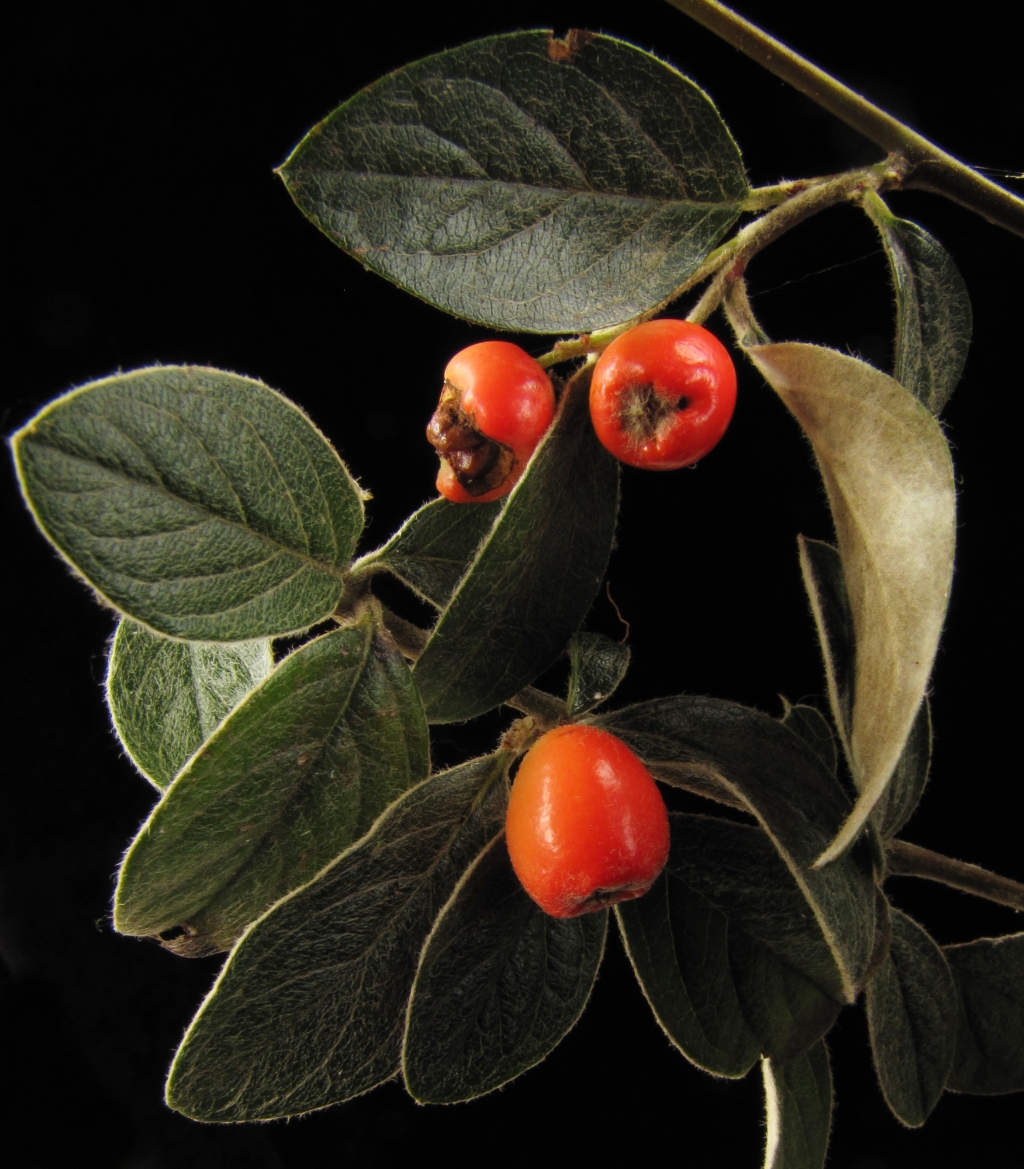Cotoneaster franchetii
BoisSemi-evergreen shrub to c. 3 m high with arching branches; new growth tomentose. Leaves simple, elliptic to ovate, mostly 20–35 mm long, 10–15 mm wide, base cuneate, apex acute to acuminate, mucronate, upper surface dark green, shiny, hairy when young, but becoming glabrous, lower surface paler, yellow- to grey-tomentose; veins conspicuous on upper surface; petiole 1–3 mm long; stipules linear-lanceolate, membranous. Inflorescence a 5–15-flowered cluster; pedicels 1–2 mm long, tomentose. Sepals 5, pubescent; petals 5, suborbicular, 3–4 mm long, clawed, pink. Pome ovoid, 6–8 mm diam., glabrescent, bright orange-red; seeds usually 3. Flowers mainly spring–summer.
VVP, GipP, OtP, CVU, HSF, HNF, VAlp. Also naturalised NSW, ACT, Tas. Native of China. A widely cultivated ornamental, first recorded as naturalised near The Basin in the Dandenong Ranges, but now known from a number of locations around Melbourne and other regional towns.
Jeanes, J.A.; Jobson, P.C. (1996). Rosaceae. In: Walsh, N.G.; Entwisle, T.J., Flora of Victoria Vol. 3, Dicotyledons Winteraceae to Myrtaceae, pp. 556–585. Inkata Press, Melbourne.
 Spinning
Spinning

